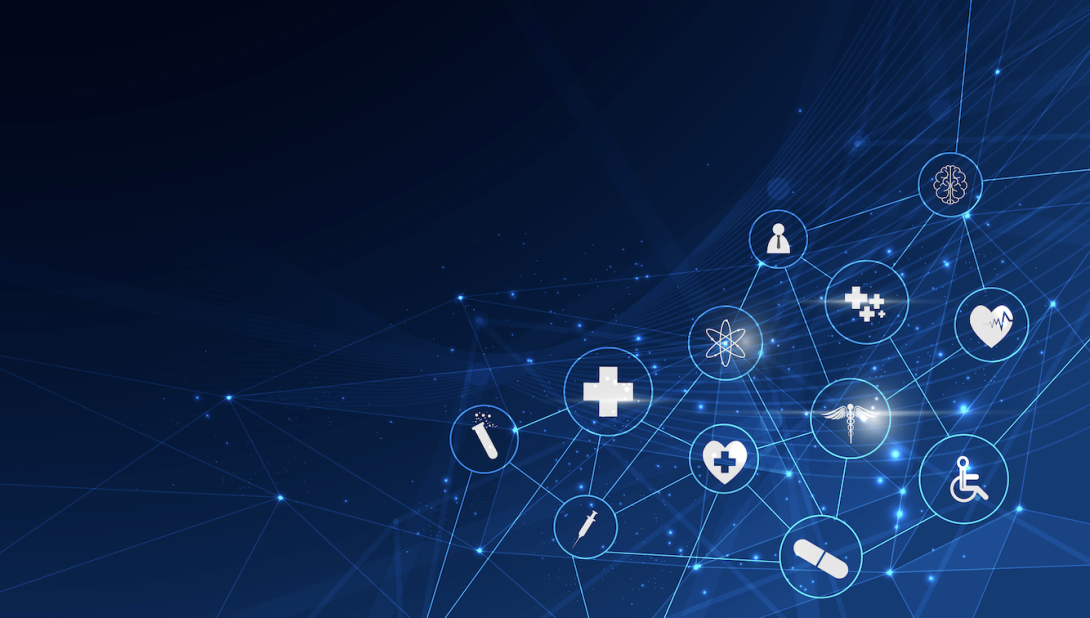Computer-driven support for diagnosis and other clinical decisions must become a mainstream part of the NHS. To achieve this requires accurate, standardised, computable forms of clinical guidance and systems that must be able to talk to each other across the UK. In its latest report, BCS, The Chartered Institute for IT, makes the case for a ‘clinical satnav’
Decision support requires computable knowledge to improve the excellence and efficiency of healthcare and empower patients. Knowledge should be formatted to enable high quality, computer-driven decision support, so it sits at clinicians’ fingertips... not in a pile beside their desks or in their inbox.
“Patients think we know everything about them, their problems and where to go next,” explains a doctor. “Until something goes wrong, and they recognise that’s a mirage. They realise that we’re often flying fairly blind, scrabbling around for information on them, trying to work out what their symptoms mean.
This involves both data about the patient’s history and current state, and knowledge about how to interpret and use that data. Yet, we could have the equivalent of a “clinical satnav” for practitioners and patients that suggests next steps (like the knowledge of how to calculate optimum routes), given the available patient health data (the equivalent of location, destination, traffic conditions and road works).”
AI - a magic bullet?
Will artificial intelligence (AI) fix this? AI can help, but it depends on reliable data. Where we have good data, AI can produce some kinds of knowledge from routine data (such as age-specific rates of drug side effects) that is more persuasive than small research studies. However, there are other kinds of knowledge (such as the effectiveness of a drug) that challenge AI methods used with routine data. This is partly because of the volume of data, but also because retrospective studies are subject to inherent limitations.
Widely available healthcare decision support is needed and is possible. It already exists to a limited extent as a cottage industry. This cottage industry assembles lots of small elements of computable knowledge using different tools and standards, limiting the potential for scaling up the industry. However, in other fields beyond healthcare, digital knowledge gathering, analysis and support for personal and expert decision-making is commonplace. Busy healthcare professionals, increasingly seeking digital-first sources of information, will demand no less. So, healthcare science, regulators and guideline providers need to satisfy that demand if they are to remain relevant to practice.
Expectations and relaities
This yawning - and growing - gulf between the expectations and realities of healthcare contrasts starkly with other sectors. Banking, shopping and travel process information, data and knowledge almost seamlessly. People and their needs are understood so intimately that there’s little difficulty recommending suitable lovers, films, food and holidays for them. Why, then, is healthcare knowledge management so immature? Why, when Britain is a leader in health research do we so rarely produce computable knowledge?
Health systems hold lots of knowledge, yet it is often inaccessible at the point of care. It’s sitting in journals and guidelines, often in email inboxes or in piles next to desks. Airline pilots have split-second, sophisticated decision support systems to guide their actions. Automated systems will soon manage driverless motorways. We have already seen sophisticated decision support systems land the Perseverance rover on Mars. But it still seems to be rocket science in the NHS or - to be fair - most health systems.
We currently lack the infrastructure for computable knowledge in healthcare. Right now, our situation is like trying to engineer the Industrial Revolution without building the coal mines and railways.
In the UK, important initiatives in this field are now underway by NHS England, Health Education England, NHS Scotland and NICE.
The high cost of poor clinical decisions
These costs can be measured. In the US, “Adults and children only receive recommended care about 50 per cent of the time,” the Journal of the American Medical Informatics Association reported in February 2021. “Individual clinician decision-making is commonly associated with mindless, or unwarranted variation (deviations from best practice, not based on evidence or patient preference) and associated with waste, morbidity, and mortality”, reported the journal. This problem, reports the journal, is not confined to generalists, underqualified clinicians or those approaching retirement. “Even specialists claiming to follow best evidence do not consistently do what they say.”
This is not the fault of clinicians. They’re typically overwhelmed by poorly processed data and knowledge. Scientific advances have outpaced the capacity of the human brain to curate and apply to patients all the amazing insights that are available. Clinicians need, beside them, not a pile of guidelines but the processing speed and interactive capacities of computers. This would keep doctors, nurses, pharmacists and other health professionals in the driving seat of excellent decision- making. And, of course, patients.
Clinical ‘satnav’ to guide practitioners
There is an opportunity to develop, at last, what the doctor-patient relationship is designed to deliver: a dynamic link between scientific learning and what’s known about the person. Where helpful, high quality decision support would guide clinicians through a series of steps: which tests to order, evaluation of the results, possible diagnoses, options for care pathways and treatments.
Missing this opportunity carries a high price. Despite everyone’s dedication, the price being paid in health system underperformance and inefficiency, where fatigued clinicians are overburdened both cognitively and bureaucratically. Much more could be achieved, potentially for less, with a better experience for patients and clinicians.
Why is this transformation so hard to achieve? Surely computers can read and perform the task? Yes, they can read. But, computers cannot use journals and guidelines to apply knowledge.
Computable knowledge is key
There is a solution which is simple to discern though challenging to implement. We need to format healthcare knowledge into a standard computable form. This translated knowledge needs to be stored in a quality-assured e-library that people and systems can access using open standards. There is a growing momentum behind the need for computable knowledge. But there is still a lot more to be done to make sure it’s standardised and properly quality assured.
A cottage industry already exists that makes healthcare knowledge computable to underpin specific decision support systems. But the standards and quality assurance are proprietary, not open. This means they vary from company to company and cannot form a shared library. It also leads to duplication and potential contradictions. The design of decision support systems is often inadequate to have real value. Often clinicians are so annoyed they switch them off or cancel warning messages without reading them.
Coding and regulatory challenges
Making knowledge - including NICE guidelines and intricate care pathways - computable means breaking down what is known into small, tightly defined fragments, which are then coded (either ‘tagged’ by condition, or actually translated into an algorithm). These fragments require regular updating, which can be automated once a suitable curation system is in place. And, because healthcare is riskier than other fields, high quality encoding is essential to ensure people get the right computer-recommended diagnosis or treatments and not the wrong ones.
Getting all of this right requires leadership, long-term strategy, funding, multi-disciplinary collaboration plus implementation across, and within, all parts of healthcare institutions. These elements are beginning to come together. The goal is attainable. And we can make gradual progress through a series of manageable,
safe steps.
Business as usual
For all these many reasons, healthcare systems have little choice. They need to take advantage of new ways to organise and express their knowledge and connect it to patient data.
Health systems, like all organisations, struggle to lead change because they are restricted by their commitment to business as usual. There is no single stakeholder within government with overall responsibility for leading and implementing this complex initiative. Government leadership is required to set out a strategy that defines the goals and the roles of the many different parts of healthcare required to create and implement the strategy.
Planning and delivery will not only be inter-departmental (bringing together, for example, those responsible for standards and guidance setting), but also those charged with healthcare digital strategy, regulation, capital infrastructure and clinical delivery in primary, community, social and secondary care. It will also be multi-disciplinary, requiring the collaboration of, for example, informaticians and clinicians.
Health is a devolved policy in the UK. So, for example, NICE provides national guidance and advice to improve health and social care in England and Wales. But the Scottish Intercollegiate Guidelines Network plays this role north of the border. Some conditions do not have published guidance from an authorised UK body so practitioners rely upon American or European guidelines. We will need to clarify the rules for how Britain’s various guidance standards should be used for decision support. Ultimately, a global framework in also required, within which jurisdictional systems can operate.
Next steps
We need to collaborate, pilot and recognise the opportunities and the challenges – and the dangers of failing to act.
It makes sense to start by piloting creation of computable knowledge and decision support in areas where progress will reduce clinical burden and enhance safety.
The development of computer-driven decision support will place clinicians in the driving seat of ever-improving, high quality learning healthcare systems. Its wider availability will underpin patient empowerment and self-care. Implementation of computable knowledge and decision support will also be vital if policy makers are to succeed in devolving as much healthcare and resources as possible from secondary to primary care.
Machine Learning
The infrastructure required for developing such decision-support – translation of knowledge into computable formats – also opens the door to a further major development. Once computers can process healthcare knowledge and connect it to patient data, a truly learning healthcare system becomes much easier. Machine learning - searching for patterns in system-wide records of practice and patient experience – becomes possible. It will provide a new source of knowledge and insights that will sit alongside traditional scientific learning. It will further improve the excellence of healthcare delivery and enable more personalised patient care, drawn from analysis of so many different patient experiences. It will also help to improve the quality of decision support because it will be possible to examine which types of support are associated with the best outcomes.
There are already promising signs that the challenges are increasingly recognised, for example NHS England has identified decision support as a priority for the new Transformation Directorate. NHS Scotland already has a national decision support strategy and service. NICE is actively exploring ways to make its guideline content computable. Health Education England provides guideline-based decision-support to the frontline, both as a point of care tool and a learning resource, and is investigating cultural, behavioural and motivational factors influencing uptake. For the good of the whole UK, indeed the world, these efforts must be coordinated and open to sharing good practice and lessons learned, both within Britain and beyond. L
This report ‘Building a ‘clinical satnav’ for practitioners and patients’ was commissioned by BCS, The Chartered Institute for IT, and based on interviews with members of a working group on computable knowledge that is organised jointly with the Faculty of Clinical Informatics. Authors: Jack O’Sullivan, Jeremy Wyatt and Philip Scott.





